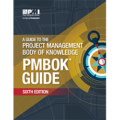
The first knowledge area within the Project Management Body of Knowledge (PMBOK Guide) is called Project Integration Management. Although most people forget about it after writing the PMP exam (because it is a unique knowledge area that underpins all of the other, more visible ones), this knowledge area is in fact the one most utilized on a day-to-day basis by practicing project managers.
So what exactly is Project Integration Management, then?
Simply put, it is the unification of the many inter-related components required to achieve project success.
For example, each of the knowledge areas represent a specialized area of expertise, like schedule, scope and cost. Success on any one of these items does not equal overall project success, because you might meet the schedule but go over budget. Hence, the actions undertaken by the project manager to coordinate these areas into a unified whole to achieve the project’s overall goals, instead of a bunch of individual ones, is project integration.
Examples include:
- Writing the project management plan
- Dealing with project changes
- Managing day to day activities
PMBOK, 6th Edition, Section 4
Project Integration Management includes the processes and activities to identify, define, combine, unify, and coordinate the various processes and project management activities within the Project Management Process Groups.
There are seven processes within the Project Integration knowledge area:
- Develop Project Charter
- Develop Project Management Plan
- Direct and Manage Project Work
- Manage Project Knowledge
- Monitor and Control Project Work
- Perform Integrated Change Control
- Close Project or Phase
Develop Project Charter
The project charter is effectively above the project. It is the document that authorizes the project, assigns the project manager, and establishes their authority to use organizational resources.
Project charters are generally only written explicitly only large projects, however all projects have a charter in some form of initiation document like proposals, tenders, contracts, letters, or emails. Almost all projects can point to a document which authorizes the project together with an initial scope, for example “Can you build me a fence behind the shop?” As a minimum, if I write you an email that tells you to proceed with a project with the expectation of being paid for the work, that is a form of project charter.
But this nonchalant way of initiating projects, although all too often the norm, invites future budget, schedule, and scope problems. Hence, the PMBOK Guide’s checklist is an excellent guide for how to properly initiate a project:
- The project’s purpose and intended goals
- Success criteria. This project will be a success if ___________. Budget and schedule are almost always on this list, but lots of other things like quality metrics, satisfied stakeholders, etc. are present for most projects.
- High level requirements
- Overall project risk. Since the project had to be initiated with specific risks in mind, stating those risks in the charter so they are obvious to the project team is good practice.
- Major project milestones
- The project budget, and its status (eg. approved funding, requiring board approval, hoping the money will be there, etc.)
- Key stakeholders
- Exit criteria (under what conditions will we abandon the project)
- Project manager(s), their responsibilities and authority levels
- Name and authority of the project sponsor. The project sponsor is one level above the project manager (outside of the project), hence they usually approve the project charter and act as the parent organization’s representative on project issues and funding.
If you set these things up prior to starting project work, you will set up your projects to run smoothly.
Develop Project Management Plan
 Unlike the project charter, the project management plan is fully within the project. It is developed by the project manager in consultation with the project sponsor (above), project team (below), and any other stakeholders that have power over, or interest in, the project.
Unlike the project charter, the project management plan is fully within the project. It is developed by the project manager in consultation with the project sponsor (above), project team (below), and any other stakeholders that have power over, or interest in, the project.
The project management plan is not a guideline or a nice-to-have agenda. It is approved by the project sponsor and becomes the official project plan that communicates to all stakeholders what their expectations should be. It communicates how the project’s goals will be accomplished, and when anything changes, the project management plan must be updated and re-approved.
Originally, the project charter established the main project success criteria, for example, “we want to build a fence that keeps bad people from stealing our equipment and costs a maximum of X.”
Now that the project has started, and entered the planning phase, the project management plan answers the question “How will we achieve that success criteria?” The project’s resources, schedule, and scope are finalized. The scope statement attempts to put a figurative “fence” (pun intended) around the project to ensure that it is clear what work is part of the project, and what is not.
Each of the 10 knowledge areas is put into practice to make sure that specialized area is covered. The PMBOK Guide lists 18 supplemental plans (Scope Management Plan, Risk Management Plan, etc.) and 33 project documents. In practice those plans and documents are not actually produced in their entirety except on megaprojects but the list is comprehensive and ensures all the bases are covered, even for small projects.
| Project Management Plan | Project Documents | |
|---|---|---|
|
|
|
Direct and Manage Project Work
The project charter represents project integration management during the project initiation phase, and the project management plan the planning phase. The next phase is execution.
During project execution the project manager must coordinate the project work into a unified whole. They must ensure that the work is being performed as per the project management plan and the project’s success criteria are being realized.
Also, project changes must be implemented, for example if the scope of work, schedule, or budget has been revised to account for new information.
Manage Project Knowledge
 Projects require knowledge to accomplish their goals. For example, almost all projects require a person (project team member) who uses skills that not everyone possesses to carry out the project work.
Projects require knowledge to accomplish their goals. For example, almost all projects require a person (project team member) who uses skills that not everyone possesses to carry out the project work.
In addition, most projects accumulate knowledge in the performance of their work. This can be explicit knowledge, like what proportions to mix together to create an asphalt mix, or tacit knowledge, like the ability to place the asphalt with a uniform thickness, obtained through experience.
The knowledge to perform the project’s work in a satisfactory manner must be planned into the project via project integration management, and the new knowledge must be passed on to the parent organization when the project is complete.
Monitor and Control Project Work
The monitoring and controlling phase refers to inspecting the project periodically to ensure it is on track to meet the project’s success criteria, and reporting the its status and/or performance to management.
Project integration management during the monitoring and controlling phase involves reviewing the project management plan and determining whether any parts of the project execution are deviating from the plan.
Perform Integrated Change Control
Project changes are one of the biggest headaches that project managers have to deal with. Deviations from the plan usually come with a certain urgency, because the parent organization must approve additional funds or schedule changes.
Change requests are initiated by any project stakeholder, following which the project manager must update the project management plan (schedule, budget, etc.) The new plan must be approved by the parent organization, and then it becomes the new plan.
Project integration management contains the actions necessary to:
- Accept written change requests
- Analyze their impact
- Revise the project management plan
- Request approval from the decision making authorities for the new plan
- Implement the new plan
Close Project or Phase
Project closure is the most often skipped (because funds have been depleted) yet the most visible phase to senior management.
The completed products or services produced by the project are obviously available for management to see, but the financial results, business case, and final reports almost always get read and viewed more than the interim status updates ever were.
Project integration management ensures that all phases of the project are closed and the benefits realized.






